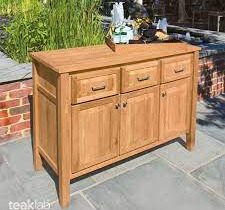Are you about to nip off to the store to pick up some cement for your next home project? Or is it concrete you need? Does it even matter?
Most people don’t know that there’s a difference between the two and use the terms interchangeably. In fact, they’re two entirely different substances.
Let’s take a look at the finer details when it comes to concrete vs cement.
Manufacturing Differences: Concrete vs Cement
Cement is a component of concrete, in the same way, that milk’s a part of cheese. It’s basically the glue that keeps concrete together.
Cement comprises a mixture of limestone, sand, clay, gypsum, iron ore, and other minerals. Manufacturers grind these together and heat them to a very high temperature of around 2,642 degrees Fahrenheit, hotter than a volcanic eruption.
This high temperature causes structural changes in the materials that help increase the strength of the final product. Once it emerges from the kiln, the cement’s ground into a fine powder and packaged.
Traditionally, these kilns rely on coal and other fossil fuels to generate heat, but lately, manufacturers are opting for more eco-friendly fuels like plastic waste, slaughter waste, and landfill overflow.
When mixed with water, cement becomes a strong adhesive that’s vital to the concrete production process. It’s also used to reinforce things like cement boards and roof sheets.
Concrete’s made from cement mixed with water, sand. gravel and crushed stone. At first, concrete’s pourable and malleable but it hardens over time into a strong, solid surface.
Construction companies mix concrete in bulk onsite for large projects but you can buy bags of pre-mix concrete for home use. You only need to add water to this mix and it’s ready to use.
Structural Differences: Cement vs Concrete
Due to concrete’s malleable properties, it’s suitable for creating an infinite number of shapes and forms. It’s widely used in construction for flooring, bridges, walls, sidewalks, highways, dams, and entire buildings.
Since it’s a vital component of concrete, cement’s also present in all these constructions but you can’t use it for much on its own. It’s good for filling cracks, smoothing rough concrete edges, or securing tiles if you have to.
Concrete is an exceptionally hardy and strong material capable of lasting from 30 to 100 years when it’s laid correctly. The drawbacks of concrete are its low tensile strength and tendency to crack unless it’s reinforced.
You can get concrete in several different varieties nowadays. For example, fiber-reinforced concrete’s best for driveways, while air-entrained concrete’s most suited to places with freezing temperatures.
For best results, get advice from your local concrete experts before making your choice.
Should You Use Concrete or Cement?
By now you know there’s no comparison when it comes to choosing concrete vs cement. Unless you’re busy with a tiny home improvement project, you’re always going to use cement for the job.
For more information on the ins and outs of home repairs and enhancements, keep reading our blog. We’re dedicated to bringing you all the latest news and tips on home improvement.















